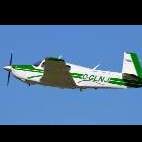Cracked side window - what's the fix?
-
Members Online
- dzeleski
- eman1200
- mooniac58
- ottorecker
- slowflyin
- Pinecone
- Rmnpilot
- Parker_Woodruff
- DC_Brasil
- Justin Schmidt
- Joe Linnebur
- Thedude
- jeff.reynoljm
- 303mooney
- wombat
- theoriginalturk
- laytonl
- Butch
- Aerodon
- CCAS
- LANCECASPER
- IvanP
- Rodeo John
- MikeOH
- Yan X
- Andy95W
- N201MKTurbo
- dkkim73
- PBones
- toto
- EricJ
- hammdo
- 201er
- redbaron1982
- RangerM20
- FlyingDude
- ChuckSchneider


Recommended Posts